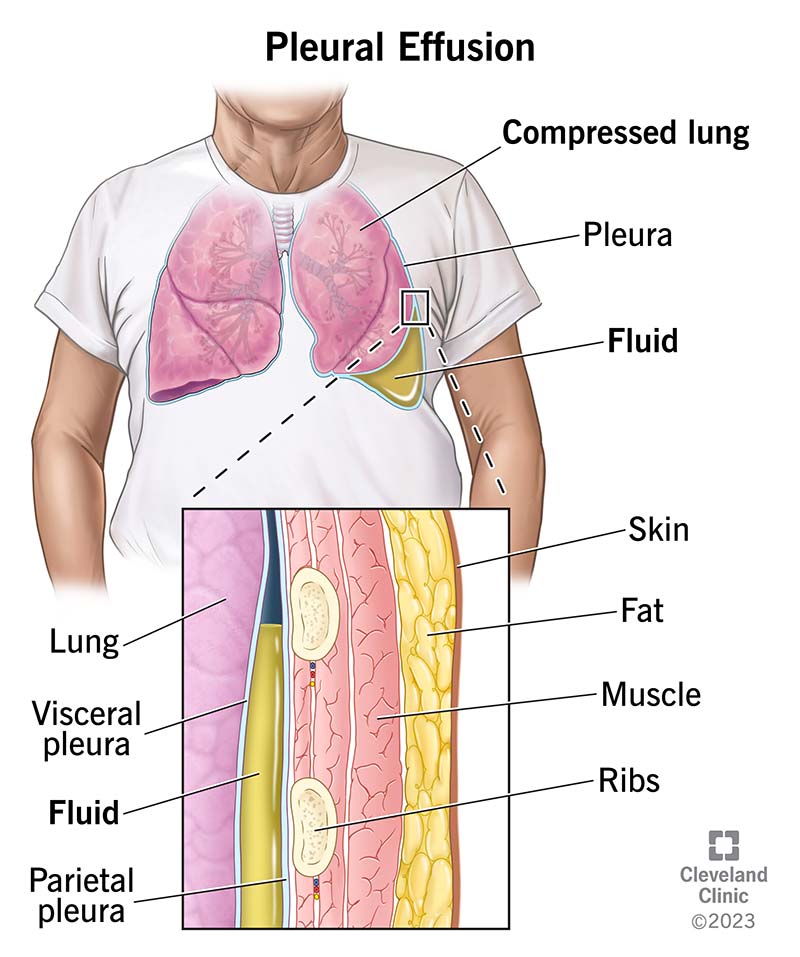Pleural effusion is a collection of fluid around your lungs. Your provider has to get rid of this fluid with medicine or a procedure. Also, they need to diagnose and treat the condition that caused pleural effusion. Treatments range from medicine to surgery. Pleural effusion can happen more than once. Your outlook depends on what caused it.

Pleural effusion, which some people call “water on the lungs,” is the buildup of excess fluid between the layers of the pleura outside your lungs. The pleura are thin membranes that line your lungs and the inside of your chest cavity.
Normally, everyone has a small amount of fluid in their pleura. This fluid acts as a natural lubricant and makes it easier for your lungs to move when you breathe. But with pleural effusion, you have too much fluid around your lungs. This means your body is producing too much of the fluid or not absorbing enough of the fluid it makes.
Healthcare providers split pleural effusion into two types, depending on the kind of fluid around your lungs.
Excess fluid may be:
Treatment varies by type and cause.
Pleural effusions are very common. Healthcare providers find pleural effusions in about 1.5 million people in the United States each year.
Advertisement
Cleveland Clinic is a non-profit academic medical center. Advertising on our site helps support our mission. We do not endorse non-Cleveland Clinic products or services. Policy
A provider will ask you about your medical history. They’ll ask what other illnesses you have and when your symptoms started. They’ll do a physical exam, which includes listening to your lungs when you breathe. Next, they’ll order tests.
Healthcare providers use these tests to diagnose and evaluate pleural effusion:
If less invasive tests don’t diagnose pleural effusion, you may need a thoracoscopy. Thoracoscopy is a minimally invasive technique, also known as video-assisted thoracic surgery, or VATS. A provider performs this while you’re under general anesthesia. Thoracoscopy allows them to see and evaluate your pleura. Often, they’ll treat your effusion during the thoracoscopy.
Last reviewed on 01/18/2023.
Learn more about the Health Library and our editorial process.
Advertisement
Cleveland Clinic is a non-profit academic medical center. Advertising on our site helps support our mission. We do not endorse non-Cleveland Clinic products or services. Policy